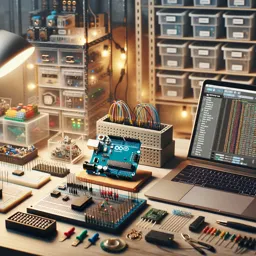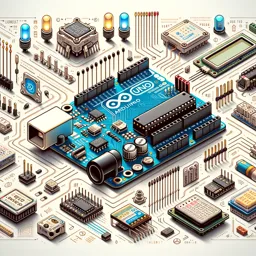Arduino has become a cornerstone for hobbyists and professionals venturing into robotics. One of the core reasons for its popularity is the ease with which it can interact with a vast array of sensors. From simple light sensors to complex motion detectors, Arduino enables robots to perceive and react to their environment. In this article, we’ll explore essential Arduino sensors and demonstrate how they bring robotics projects to life.
What is Arduino?
Arduino is an open-source electronics platform based on easy-to-use hardware and software. It consists of a microcontroller board and an IDE (Integrated Development Environment) that allows users to write, compile, and upload code. Its user-friendly approach makes it accessible for both beginners and advanced users to create interactive objects and systems.
Why Use Sensors in Robotics?
Sensors are vital in robotics as they supply the information a robot needs to understand its surroundings. By processing sensor data, a robot can make informed decisions, avoid obstacles, follow lines, or even respond to human gestures. This makes robotics projects more intelligent, adaptive, and interactive.
Common Arduino Sensors for Robotics
- Ultrasonic Distance Sensor: Used for obstacle detection and distance measurement, essential for navigation and mapping.
- Infrared Sensors: Enable robots to follow lines, detect edges, or recognize remote commands.
- Light Sensors (Photocells): Allow robots to react to changes in lighting, making light-following robots possible.
- Temperature and Humidity Sensors: Useful for projects where environmental data collection is needed.
- Gyroscope and Accelerometer: Help in balancing robots, detecting tilt, or measuring movement for precise control.
- Touch Sensors: Enable robots to detect physical contact, essential for collision detection or interactive projects.
Integrating Sensors with Arduino
Connecting sensors to an Arduino board is straightforward. Most sensors output either analog or digital signals, which can be read using the board’s pins. The Arduino community provides numerous libraries and example codes, making setup and coding beginner-friendly.
For example, integrating an ultrasonic sensor for obstacle detection might only require a few lines of code to measure and respond to changes in distance.
Example Project: A Basic Obstacle-Avoiding Robot
By combining an Arduino with ultrasonic distance sensors and motors, you can build a simple robot that navigates around obstacles:
- Attach the ultrasonic sensor to the front of your robot chassis.
- Connect the sensor and motors to the Arduino board.
- Write a program that reads the distance from the sensor and moves the robot forward unless an object is detected, at which point it turns to avoid the obstacle.
This basic setup introduces the principles behind more advanced robotic systems.
Getting Started with Arduino and Sensors
- Acquire an Arduino starter kit with common sensors.
- Begin with simple examples—such as blinking LEDs, then progress to sensor-based projects.
- Use online resources and forums to troubleshoot and expand your knowledge as you experiment with new sensors.
Conclusion
Arduino, paired with sensors, is a powerful toolkit for bringing robotics projects to life. Whether you are a beginner or an advanced maker, understanding how to use sensors will unlock endless possibilities in interactive robotics. Get started today, and see where your creativity and Arduino can take you!



















